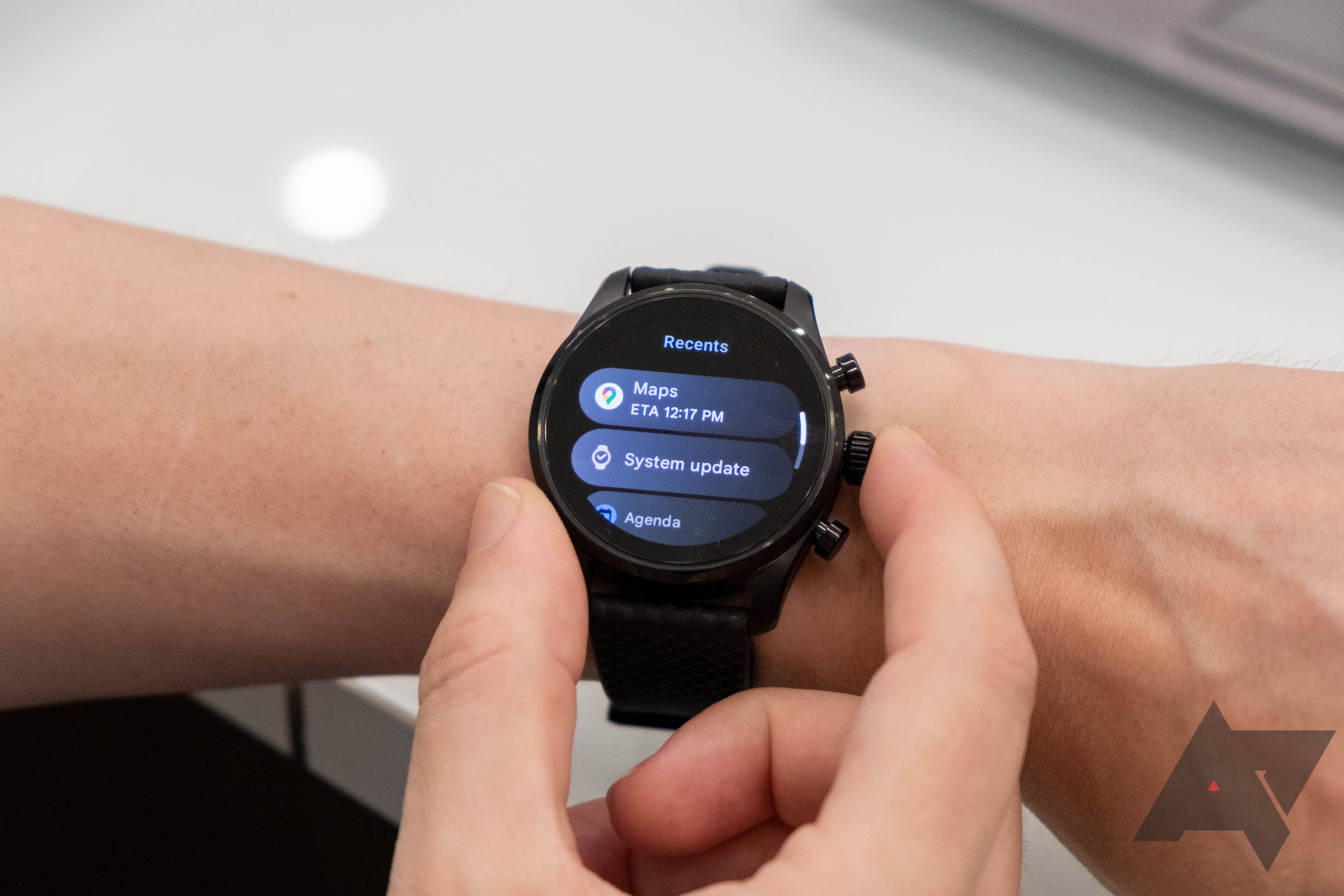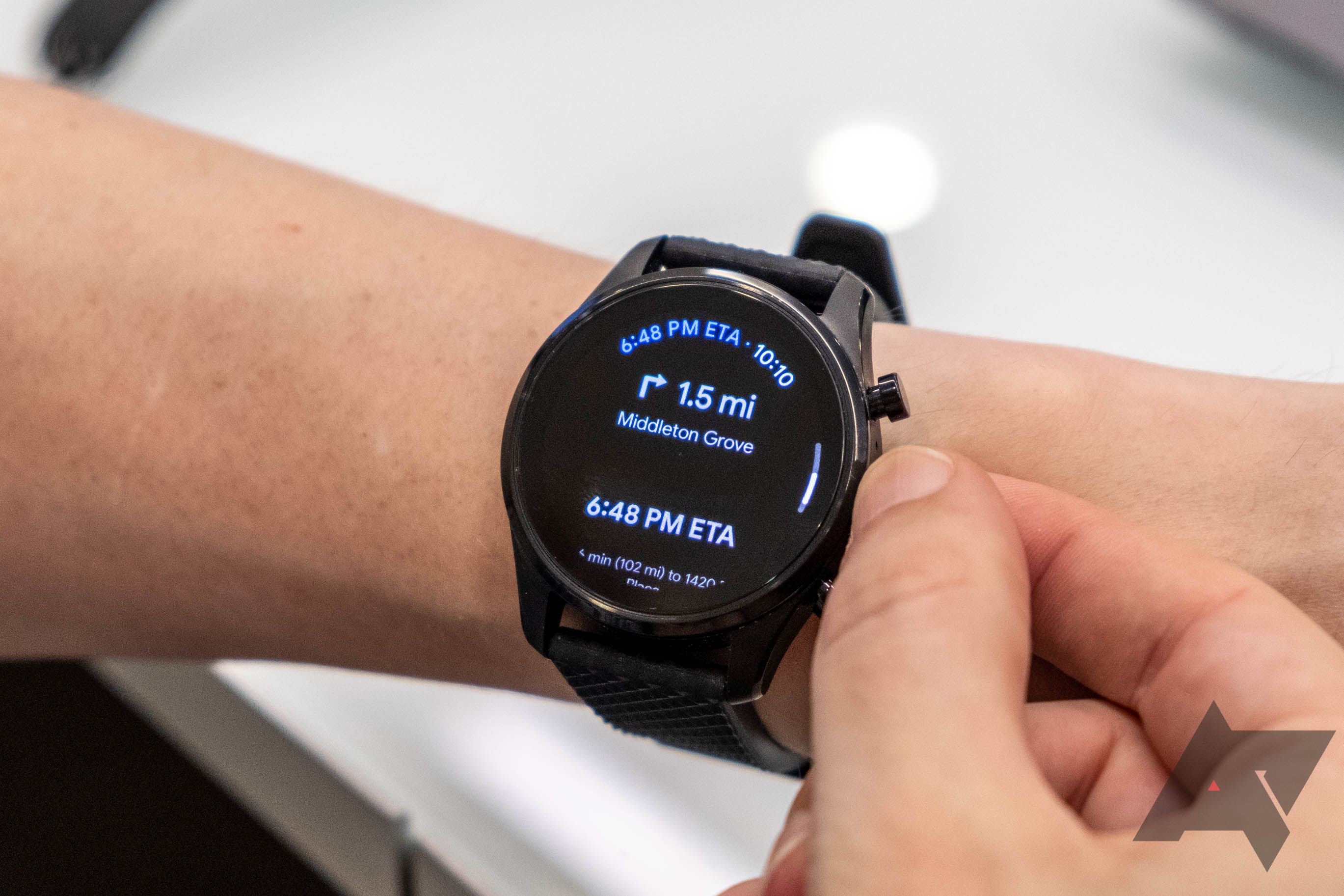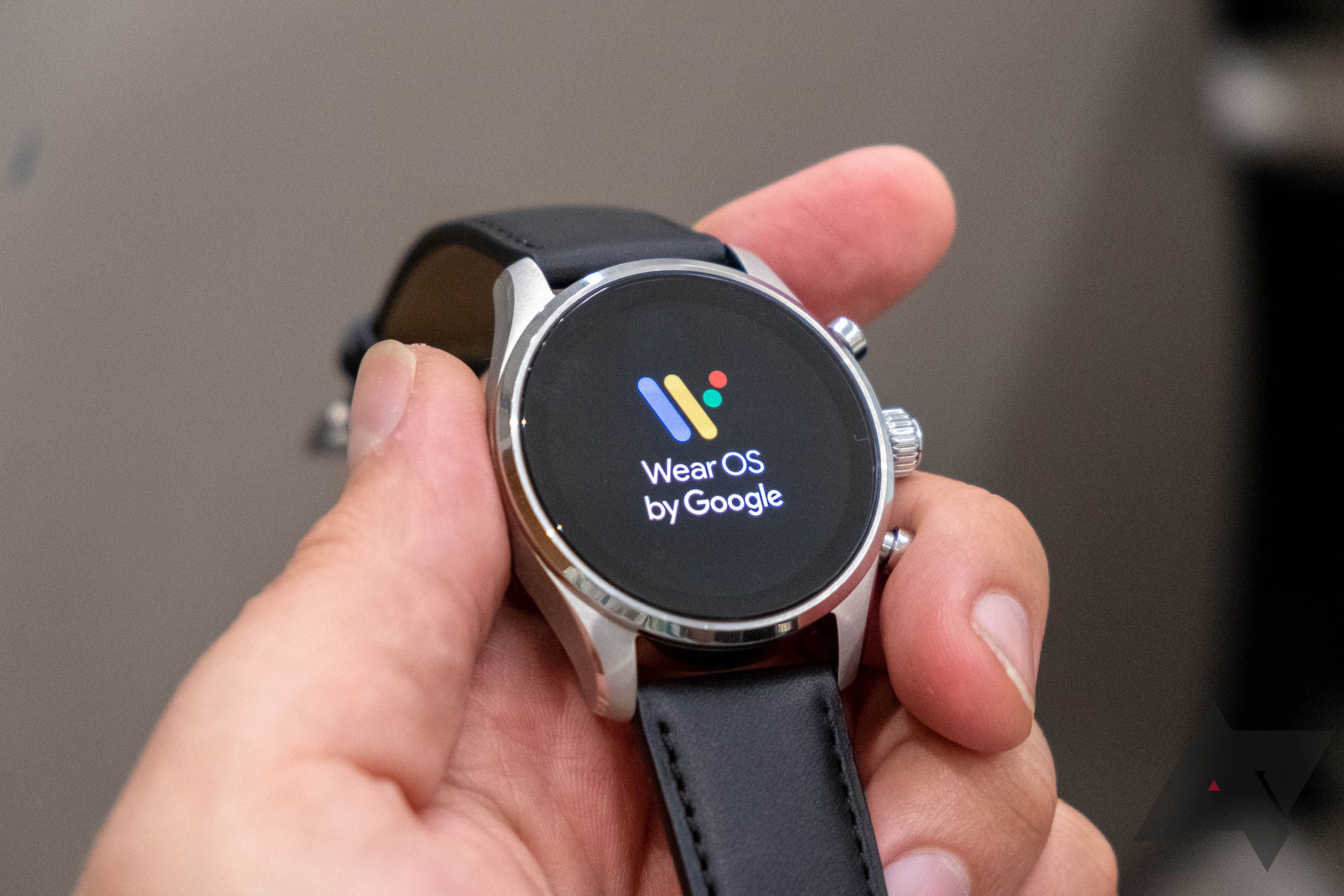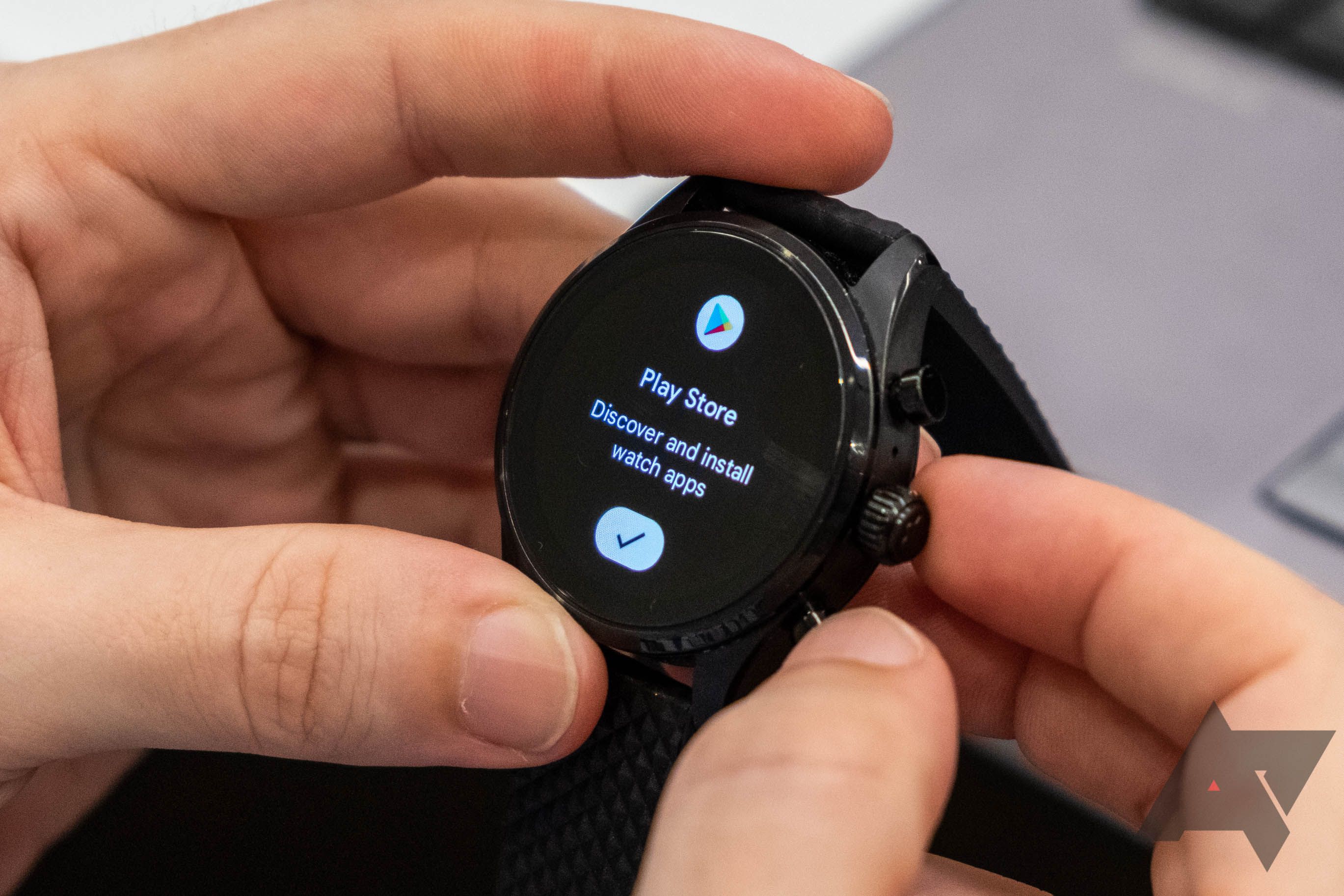Montblanc invited me to check out its new (and very expensive) Wear OS 3-powered smartwatch. I didn’t get a lot of time with it, and you can anticipate a more extensive review of both the software and this watch coming later, but the abridged version is that Wear OS 3 isn’t a silver bullet for Android’s wearable problems. If anything, it seems like Google is offloading more of its responsibility onto manufacturers to fix the situation, and I’m not sure that’s wise.
The ultra-premium Montblanc Summit 3
As a device-specific experience, I should reiterate what the Montblanc Summit 3 is, and it’s not a smartwatch most of our readers will be interested in, primarily due to its ultra-premium $1,290 price. I know that seems eye-watering, but this isn’t a “normal” smartwatch. Montblanc is positioning it against the highest-end versions of the Apple Watch with features like a solid sapphire crystal, titanium body, and other ultra-luxurious and durable design decisions.
One aspect of the watch that isn’t that premium is the chipset, which uses the older Wear 4100+. As we all eagerly await Wear OS 3 on top of the new W5+ Gen1 and the various devices that will use that combo, this is objectively a more dated experience.
The Summit 3 rounds out its spec sheet with a mid-sized 400mAh battery that we’re told should last a day or two on a charge, depending on use, and tops up in around an hour. 1GB of RAM isn’t unusual for a wearable, nor is the 8GB of storage. The 5 ATM water resistance means it should survive a dip, and the 1.28-inch OLED screen is pretty standard. It can measure heart rate, sleep, and blood oxygen level, and it can also track eight different workout types: cycling (outside and inside), running, treadmill, HIIT, yoga, hiking, and “other,” with more on the way. Montblanc claims it didn’t include activities like swimming because other apps in the store can fill that gap. That might seem like a small thing, but with other software changes, it’s important, and I’ll discuss that in more detail later.
As a more premium product, Montblanc offers some extra service benefits. If your battery starts to die prematurely while it’s under warranty, it’ll be replaced, and even if it’s out of warranty, it can be replaced for a cost (somewhere around $100, we’re told). Body damage to the titanium or stainless steel parts can also be repaired, but damage to the sapphire crystal can’t be.
Montblanc isn’t entirely in charge of software support — Google and Qualcomm play a role there, too — but the company says it will do everything it can to deliver new features and watch faces over time, pointing out that many of its older Wear OS-based wearables are still getting a trickle of changes.
Wear OS 3
Before I discuss the important software details, I should stress that I already have a lot of feelings about Wear OS 3. Between the initial Samsung exclusivity, old news regarding supported platforms, and the nearly interminable wait for actual devices running the non-Samsung version to land, I’m frustrated with the situation. Now that we’ve learned more about how the platform’s future has objectively changed, I’m not sure Google has the right plans to ensure success. Like it or hate it, Wear OS 3 is leaning even further into a platform-before-product ideology.
The overall Wear OS 3 software experience on the Montblanc Summit 3 will feel familiar if you’ve used an older Wear OS 2 watch or one of the recent Galaxy Watches. I can’t give you a complete tour (our time was too short), but the general vibe is the same.
You’ve got a watch face home screen with the tile-based paradigm. You swipe from the edges to navigate around. A swipe in from the left in most places is back unless you’re on the sort of side-scrolling Home Screen plane, where functionality changes. It’s the same consistently inconsistent experience Wear OS has had in the past.
It has the Play Store, and you can install apps made for Wear OS. Animations are subtly different, with nested menus having a more subtle zooming effect as you navigate back in them, shrinking away into eternity as you swipe them away. This isn’t a substantial redesign or an entirely new way of interacting with Wear OS, and most of the visual changes are window dressing, like the curved clock you’ll notice on the top of the screen most of the time and the gradient backgrounds on things like buttons.
I didn’t have a Wear OS 2 device on-hand to directly compare the Summit 3 against (our hands-on was arranged at the last minute), and I will admit it’s been a few months since I poked an older device. Still, only a few things stood out as substantial changes for me, like the new recents menu that lists freshly accessed apps and a much more extensive quick settings menu, which has far more options than I remember any of my older Wear OS devices having.


Like everywhere else, Google Wallet replaces Google Pay on Wear OS 3.0, and tiles (the not-quite widgets you can scroll between) have been upgraded to let developers do more fun things with them, courtesy of new APIs.
Fast Pair is one of the most significant changes we can look forward to that I didn’t have the chance to test. Setting up a Wear OS watch has always, always been a frustrating and obnoxious process, but the actual Bluetooth pairing part of that equation will be getting simpler because just having a Wear OS 3 device near your phone should prompt it to connect. Think of it as similar to Fast Pair for things like earbuds.
Although the Summit 3 uses an older Snapdragon Wear 4100+ chipset, I didn’t notice any issues with things like stuttering or dropped frames. Performance was fluid across the devices that I played with. One device was in demo mode, and the other was our presenter’s personal device which he’d used for some time. This was a structured experience with limited hands-on time, but using the watch didn’t feel as janky as I’m used to on other Wear OS devices, and that’s noteworthy — maybe Wear OS 3 itself will be a little smoother.
The thing that does concern me about Wear OS’s future is an almost throwaway detail that Montblanc mentioned: They’re using their own companion app. I thought that was pretty cool, but I remembered that was something Fossil was also working on and that the Pixel Watch was also rumored to have its own app. When asked to expand on that, a representative told us this was a requirement imposed by Google. All Wear OS 3 devices will have to have their own companion app.
Letting the market fix Android’s wearable problem
After the briefing, I double-checked, and Fossil had explained as much just last month, but the magnitude of that impact had slipped under my radar. Every company that wants to make a Wear OS smartwatch has to make an app now, which means the cross-device experience is now on the shoulders of every company making one of those watches. Remember the lack of fitness tracking in Montblanc’s app I mentioned and the limited number of exercises it could track? That’s an impact of this decision. In the face of Apple’s utter and terrifying cross-platform dominance, pushing even more of the quality of the experience across devices onto third parties seems like an incredibly shortsighted plan.
Montblanc explained that the companion app didn’t even have fitness integration yet, and the company had to build up features for things like its own workout modes independently — that’s why there are only eight types of supported workouts to start. The company pointed out that you can use other apps from the Play Store to plug the gap, and while that is an excuse, it’s not really Montblanc’s; it’s Google’s.
Because Wear OS 3 isn’t centralized under the Google-controlled Wear OS app, the experience is about to get fractured (fragmented, some might say), with different manufacturers differentiating not just in hardware but in software and feature sets. On the one hand, I can see some arguing that this opens the doors for others to provide novel solutions and improvements beyond what Google can devise. It’s a common argument for all platforms that struggle without a so-called killer app, “let the developers figure it out!” But this isn’t some new or bleeding edge product category, just one that competitors are already winning at, and I’m not sure that tossing a whole generation of products to the whims of the free developer market and whatever ways they can think to plug these new gaps is very wise at this stage.
I hope I’m wrong in my negativity here after the years of abuse Wear OS fans have suffered. Wear OS 3 feels like Google falling back onto its all-too-frequent hands-off approach, acting as if it’s above the responsibility of directing the market even as it imposes arbitrary requirements and takes a cut from it. You can’t have your cake and eat it too; there’s a duty here that Google isn’t performing. This laissez-faire approach may have worked for Android, but I think that was a different time and market. Wearables aren’t phones, and Wear OS isn’t Android, even if it’s based on it. Deflecting the responsibility here onto manufacturers feels shortsighted, only further highlighting the advantages of Apple’s more tightly-controlled approach this late in the wearable game.


